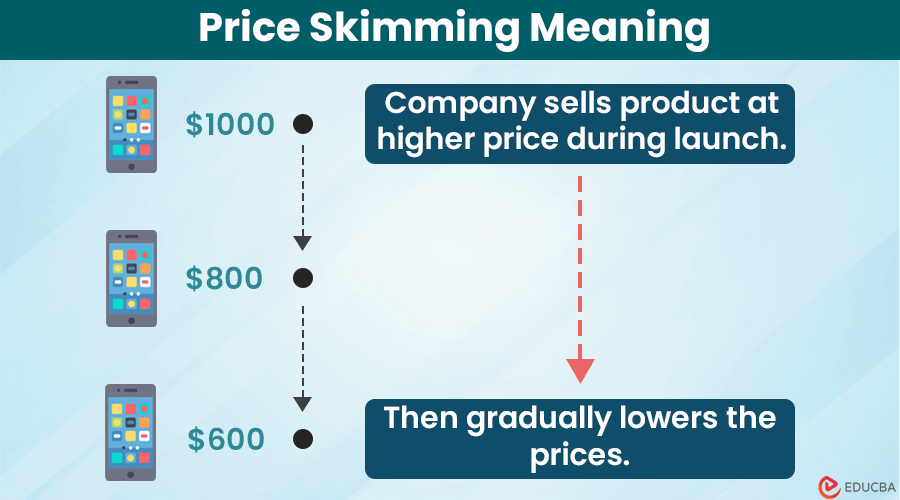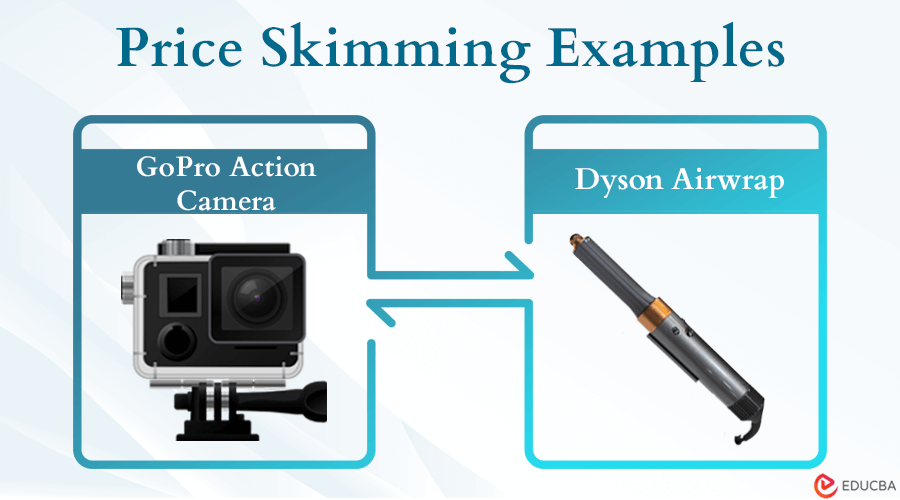
Price Skimming Definition
Price skimming is when businesses set the launching price of a new product very high and gradually reduce its price as the product’s hype dies down. Examples of brands that use this price technique are Tesla (Electric Cars), Samsung (Galaxy Z Flip), Nike (Air Force), etc.
The goal of this pricing strategy is to quickly earn high revenue before reducing the price to sustain in the market. Companies use this pricing strategy to extract the maximum possible revenue from people who are willing to pay more for the newest innovation. Later, when the early adopter demand reduces or more competitors enter the market, the company gradually reduces its price to reach a wider market.
Table of Contents
- Definition
- How Does It Work?
- Real Examples
- Advantages
- Disadvantages
- Premium Pricing Vs. Price Skimming
How Does Price Skimming Work?
Businesses that have established themselves as pioneers in the market are usually the ones that can effectively use price skimming. These are the companies that have a loyal customer base and whose products are considered highly trustworthy. Customers are always eager to know what new products the company comes up with.
Using this anticipation and trust as a basis, when such companies launch a new product, they set the initial price relatively high. At this stage, the company only wants to attract people who are willing and able to pay high prices just to be the first ones to use it.
These people are called the “early adopters”. They are either tech-enthusiasts or trend-conscious people who always need to get their hands on the newest thing. The goal here isn’t to sell more but to earn more from the few sales made. This maintains the exclusivity of the product and helps the company sell it at a high price.
However, once the initial hype of the product dies down or another latest innovation hits the market, the company slowly reduces the product price. The goal now is to reach more people by making the product affordable for a larger audience. At this stage, selling more becomes the key. Finally, the price stabilizes at the point which reflects the perceived value of the product.
Examples
Here are a few real-life examples of price skimming.
Example #1: Dyson Airwrap Launched in 2022
Popular home appliances company Dyson is known for applying a skim pricing strategy. For example, in 2022, it launched its Dyson Airwrap at a whopping $599. The price was relatively higher than other hair dryers available in the market. Dyson wanted to target customers willing to spend more on an energy-efficient and superior product. Despite the high initial price, Airwrap is quite popular among new-age customers.
Over time, Dyson might lower the price of the Dyson Airwrap to reach more businesses. But for now, it’s still priced at $599.
Example #2: GoPro Action Camera Launched in Early 2000s
GoPro was the first company to launch an action camera in the early 2000s. The company launched its first cameras at a relatively higher price, offering innovative features like ruggedness, waterproofing, and specialized mounting options.
These features appealed to users seeking high-quality footage in extreme conditions, and they were willing to pay a premium price to get their hands on this innovative product. However, with technological evolutions, GoPro faced severe competition and had to revisit its pricing strategy. With time, it reduced its prices to be affordable for the masses.
Advantages
The following are the main advantages of price skimming.
- It helps increase initial profits due to the product’s high price.
- Companies can quickly recover R&D and marketing costs.
- It increases the perceived value of the product.
- It allows the company to adjust the price according to changing market conditions.
- It helps a company target different market segments.
Disadvantages
The following are the major disadvantages of price skimming.
- Market penetration is low as the product’s price is high during the launch.
- Competition can develop better products at lower prices and challenge the company’s market position.
- Gradually, profit margins reduce as the price decreases.
- Customers can feel alienated or confused due to changing prices.
- It only works if the target customers are not price-sensitive and the product is innovative.
Premium Pricing Vs. Price Skimming
People often confuse price skimming with premium pricing. While both pricing strategies charge a high price in the beginning, there’s a significant difference between the two.
| Aspects | Premium Pricing | Price Skimming |
| Meaning | Companies set a high price for the product to signal its higher quality or exclusivity. | Companies launch a product at a higher price and gradually reduce the price to sustain competition and maintain demand. |
| Timing | The price is consistently high | The price is high only during the introductory phase of the product |
| Target Customers | Status-conscious and affluent people | Early adopters of new technology or trends |
Final Thoughts
Price skimming is beneficial for a breakthrough product with a narrow supply and in the first stage of the product life cycle. However, it is only a marketing tool benefiting from the diffusion of innovation. To build a brand status, improve customer experiences, etc., businesses can combine this pricing strategy with other powerful instruments, such as pricing softwares.
Frequently Asked Questions (FAQs)
Q1. What brands use a price-skimming strategy?
Answer: Popular examples of brands that use price skimming are Apple (iPhone), Dyson (Airwrap), Sony (PlayStation), etc. Any brand that wants to leverage the hype around its latest launches can use the price-skimming strategy.
Q2. When should a company adopt another pricing strategy to switch from a price-skimming strategy?
Answer: A company should switch from a price-skimming strategy when competition surges and market demand declines. Businesses should adopt another pricing strategy, like penetration pricing when production costs drop.
Q3. How long does the price-skimming strategy last?
Answer: The price skimming strategy can last for a limited number of months to a few years, depending on market settings and competition.
Q4. Differentiate between penetration pricing and price skimming.
Answer: Price skimming and penetration pricing are essentially the opposite of each other. Companies implementing a skimming strategy set a higher initial price to attract early adopters, while companies employing penetration pricing set the price low enough for the product to be adopted by the masses. While the goal of price skimming is to sell to a chosen few customers, penetration pricing aims to reach as many people as possible.
Q5. When should companies use skim pricing?
Answer: Skim pricing depends on timing, distinctiveness, and demand. Businesses must adapt this pricing strategy only when they can quickly adapt to the market, have justifications for a higher product pricing, have high brand visibility, and are in tune with competitors’ pricing campaigns.
Recommended Articles
This article from EDUCBA thoroughly explains price skimming, including real-world examples. If you’re interested in similar topics, consider reading the following articles:


